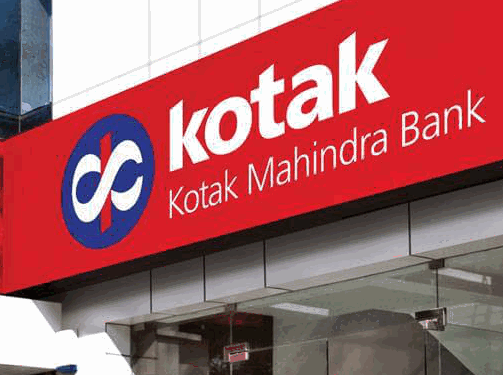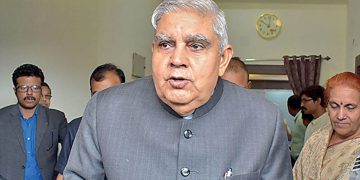Mumbai: Robust margins, which rose to a multi-year high of 5.47 per cent, and improved asset quality helped Kotak Mahindra Bank book a 31 per cent growth in net income at Rs 2,792 crore in the December 2022 quarter.
The management sees further uptick on the margins front in the fourth quarter as more loans get re-priced.
On a consolidated basis, net profit rose 17 per cent to Rs 3,995 crore, as barring life insurance and microfinance arms almost all the subsidiaries booked lower profits in the reporting quarter.
Total advances, led by unsecured retail loans and home loans, jumped 24 per cent to Rs 3,39,313 crore, leading to a 30 per cent increase in the core net interest income –money earned on advances after paying for the liabilities/deposits — to Rs 5,653 crore.
The management led by deputy managing director Deepka Gupta and chief financial officer Jaimin Bhatt told the press Saturday that the bank’s net interest margin jumped to a near-record 5.47 per cent in the reporting quarter from 5.17 per cent on-year.
As more and more existing loans get re-priced in a rising interest rate regime, the management sees more room for further uptick in the margins in the March quarter as a lot of advances are on floating rates. About 63 per cent of loans are linked to the external benchmark rates, which automatically help the bank re-price assets when interest rates move up. Having said so, of course, this will not sustain in the loan run as interest rates will cool off and when the bank will be forced to offer more to depositors, they said.
Higher fees from distribution, syndication and services boosted the fee income to Rs 1,847 crore, a growth of 23 per cent, helping the bottom-line grow bigger.
On the bank’s continuing dependence on retail book — of the total loan book of Rs 3,39,313 crore, as much as Rs 3,10,734 crore are retail, most of which is unsecured.
Its corporate book inched by a low 2 per cent in the quarter to Rs 28,000 crore and the bank sees this side of the assets growth to remain muted even going forward.
Of the total retail book, home loans and loans against property constitute around Rs 90,000 crore, personal loan book is Rs 49,000 crore, credit card outstanding is Rs 9,000 crore and the unsecured commercial loans in the retail book is around Rs 27,000 crore and till recently crunched MFI book has more than doubled to Rs 5,000 crore now.
Both Gupta and Bhatt ruled out any stress on the retail front saying given the robust customer/credit data availability and also analytics help a lender make far better credit risk assessment today. Also, the bank doesn’t see any reason for not lending again to those people who serviced their loans during the pandemic.
“So are we going overboard with retail loan? Our view is that we are not yet because of these reasons coupled with the fact that the retail loans as percentage of total credit is still very low in our country,” Gupta said.
The bank continued to report better numbers on the assets quality front with gross NPAs coming down to 1.90 per cent from 2.71 per cent a year ago and the net NPAs also nearly halving to 0.43 per cent from 0.79 per cent in December 2021, Bhatt said.
As a result, credit cost on advances came down to 27 basis points, including standard provisioning but excluding reversal of the pandemic provisions and restructured accounts.
The pandemic-related provisions stood at Rs 400 crore and the bank has standard restructured fund-based outstanding of Rs 281 crore (0.09 per cent of advances). Under the MSME resolution framework for the pandemic, the bank has standard restructured fund-based outstanding of Rs 484 crore (0.16 per cent of advances) as of December 2022.
The provision coverage ratio stood at 77.6 and the capital adequacy ratio, as under the Basel III norms, stood at 21.7 and the core capital ratio of 20.7 including unaudited profit.
The bank, which has been thriving on the CASA (Current Account Savings Account) deposits for long, said its CASA ratio has fallen to 53 from a high 60 last year, but is not worried about this saying as interest rates remain high, it will have to soon offer higher deposit rates. Also, the immediate reason for the slippage in the ratio was that for some time now the bank has not been chasing term deposits, which is not the case now.
Of the consolidated net income of Rs 3,995 crore, Kotak Life chipped in with Rs 330 crore, marginally higher than Rs 247 crore, while Kotak Securities saw profit dipping to Rs 241 crore from Rs 270 crore. Its auto loan non-banking finance company Kotak Mahindra Prime also saw profit shrinking to Rs 225 crore ( against Rs 254 crore).
Kotak Asset Management & Trustee Company booked Rs 150 crore in net profit as against Rs 149 crore a year ago, and Kotak Mahindra Investments saw profit dipping to Rs 86 crore from Rs 111 crore.
But BSS Microfinance saw bottom-line bulging more than three time to Rs 82 crore from Rs 26 crore and Kotak Mahindra Capital Company’s profit plunged to Rs 28 crore from Rs 103 crore a year ago.
PTI






































